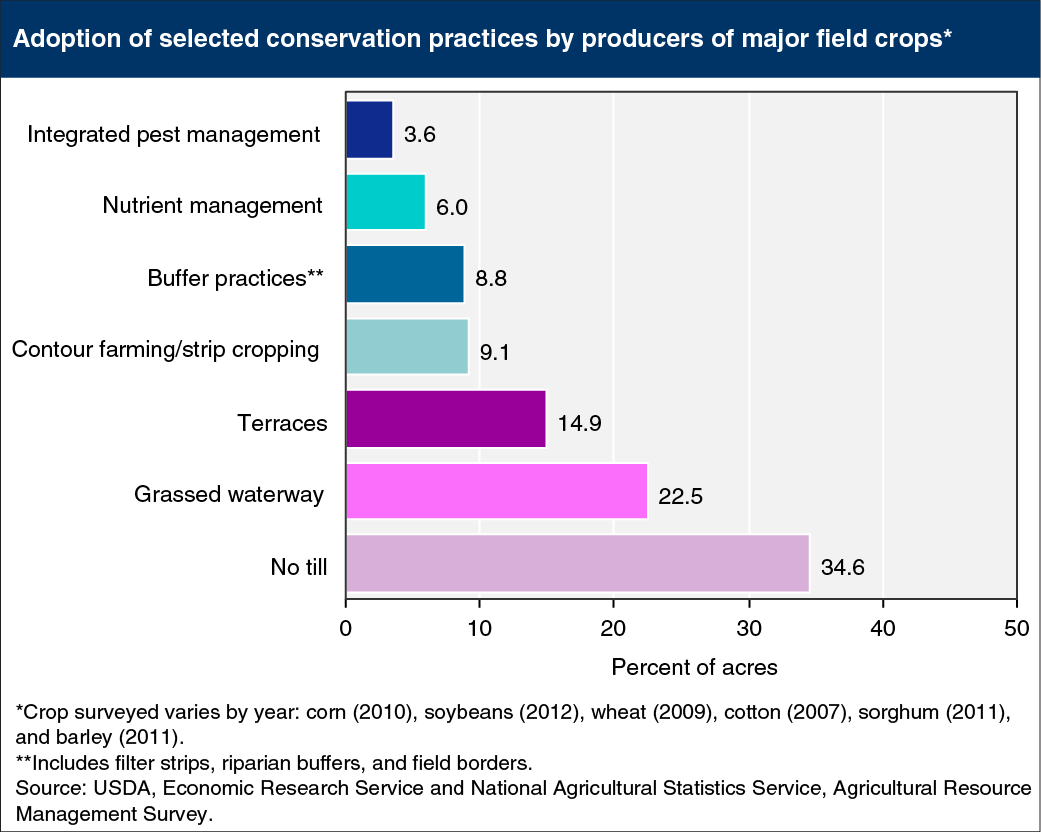Some conservation practices are more widely adopted than others
- by Roger Claassen
- 9/21/2016

The environmental effects of agricultural production, e.g., soil erosion and the loss of sediment, nutrients, and pesticides to water, can be mitigated using conservation practices. Some practices are more widely adopted than other practices; no conservation practice has been universally adopted by U.S. farmers. Variation in conservation practice adoption is due, at least in part, to variation in soil, climate, topography, crop/livestock mix, producer management skills, and financial risk aversion. These factors affect the onfarm cost and benefit of practice adoption. Presumably, farmers will adopt conservation practices only when the benefits exceed cost. Government programs can increase adoption rates by helping defray costs. The potential environmental gain also varies—ecosystem service benefits (such as improved water quality and enhanced wildlife habitat) depend both on the practice and on the location and physical characteristics of the land. This chart is based on data from ARMS Farm Financial and Crop Production Practices.

